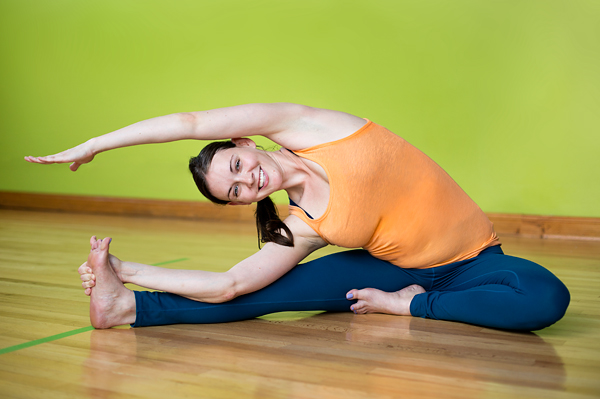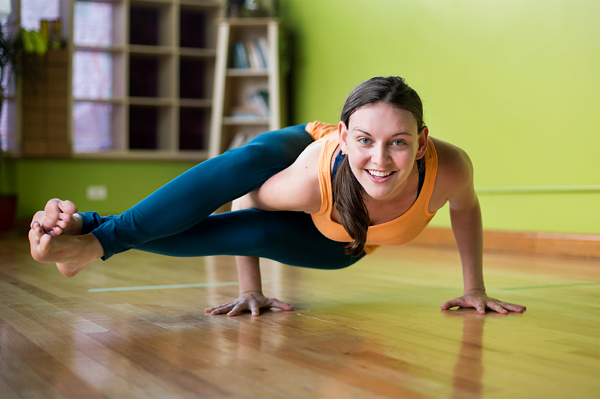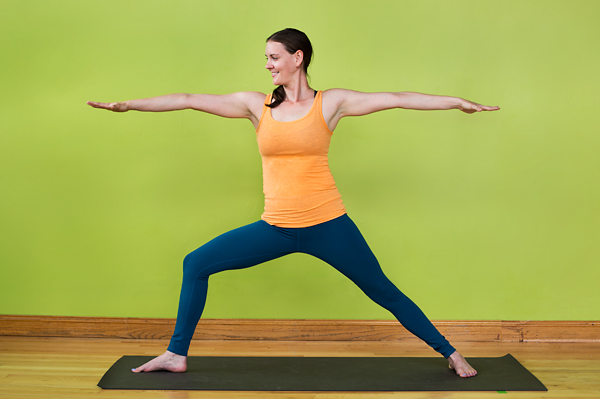
Yoga for beginners does not typically begin as pure bliss, accented with melodious oms. At the start, yoga can be a bit baffling. You have to decide which yoga class to try at which studio, learn what the teacher means when they announce it's time for downward dog, and even figure out what to wear to a yoga session.
Just remember one thing: however you choose to practice, it's the right path for you.
This is advice from our expert and co-owner of a Chicago-based yoga centre. Below she shares with us five more additional tips for new yogis trying to find their bearings.
Understand the different types of yoga.
First and foremost, the best path for beginners is choosing the type of yoga that makes them excited to get on the mat.
Yoga for Stress Relief
If you’re seeking stress relief, relaxing, slower-paced styles such as gentle yoga and Yin yoga might be the right choice for you. Think plenty of stretching, deep breathing, and a nice cool down that feels like taking a nap (lavender eye pillows are often included).
Yoga for a Mind-Body Connection
If you’re very interested in learning about how to integrate mind and body, try Hatha yoga, in which you hold each posture for 5–10 breaths before moving on to the next part of the sequence. You’ll get to know yoga poses well and learn how to enter, sustain, and exit them.
Yoga for Exercise
If you’re more interested in bending, sweating, and burning calories, you might feel engaged in a style that moves quickly between poses, like Flow, Vinyasa, or Ashtanga.
According to our expert, choosing the right class is crucial to stay engaged and motivated. If the type of class does not suit yogis-to-be’s needs and likes, they might get distracted, bored and finish the session feeling like, what’s the point of this?.

Look for yoga studios and teachers with your kind of vibe.
Find teachers that help you love and understand yoga. When you respond to their approach, your internal reaction should be: Wow, cool! I didn’t know how to do this. This is just so different from how I normally do this pose, it’s so great.
It could take as long as a year of practice to truly determine your preferences for teaching style and environment. You could find your place almost anywhere! Some local gyms offer yoga classes at a hand’s reach, while yoga-focused facilities can also share lifestyle tips and ideas.
No classes nearby? No problem - turn your own room into a yoga studio.
Yoga at home is more or less cost-free. With no gym or class subscriptions to pay and no hassle of having to venture outside on cold days, all you need to start is just a little motivation.
Is yoga at home as effective as a group session with a professional? It still can be! If you are seeking guidance, go online and browse for what suits you best. From a brief, energising set of asanas to a full-time session, you will always find something to fit into your schedule. Some teachers upload a new yoga lesson every few days and feature series that you can do every day for a whole month.
What about the equipment? You don’t need much to get started. A yoga mat would be handy but if you don’t want to invest in your new hobby, a bath towel laid out on the floor will do just fine. In terms of clothing, all you need is something comfortable and loose-fitting. Choose whatever feels right for you!

Don’t compare yourself to others.
Insanely flexible, strong yogis doing handstands and backbends are over-represented in the popular perception of yoga. It’s probably the most intimidating part of yoga for beginners.
How not to get discouraged by all those fancy images? It is important to remember that you are practicing alongside people of all sorts of abilities, motivations, and levels of experience. For instance, it's really common for someone with three classes' worth of experience to be practicing alongside someone who has three years' worth of experience. Just focus on your own practice and goals and don’t worry - even the yoga experts were once beginners. Good news is, you don’t need much time to start seeing some benefits from all those asanas.
Be honest with the teacher.
Before class, let them know about any injuries or weaknesses you might have. Tell them how comfortable you are with being touched, since physical adjustments by the teacher can be a crucial part of instruction. Ask to be placed in the back of the classroom if you don’t want to feel put on the spot.
And, within reason, be willing to understand that a teacher can’t read your body 100% accurately. You might both discover you have a physical limitation in the middle of a class.
Sometimes, students might not even be aware of certain weaknesses in their body just because they haven’t used it in this capacity yet. The body awareness comes with time and practice.
Adjust your idea of goals.
Who hasn’t heard of “no pain, no gain” when it comes to fitness? Luckily, this rule isn’t an adage that translates well to yoga, at least in our expert’s opinion.
Instead of on the ‘goal’, we should try focusing on working with our skills and limitations. Whilst ‘a goal’ is placed in the future, the journey to achieving it can be a destination in itself - keeping this in mind will help us get more out of a yoga class or a home session.
Each day’s practice forces you to readjust what’s at the edge of your skillset, adding another stepping stone along the path. As you keep moving that edge ahead, you’ll eventually reach a point where you accomplish something big—doing the crow pose, for instance. And then you start with another edge along a path to something new.
“The aspect of the goal that’s important is the motivation to keep doing it,” she says.
Now it's time for a pep talk:
Photos by Matt Schwerin, Groupon; video by Groupon
RELATED READS:








